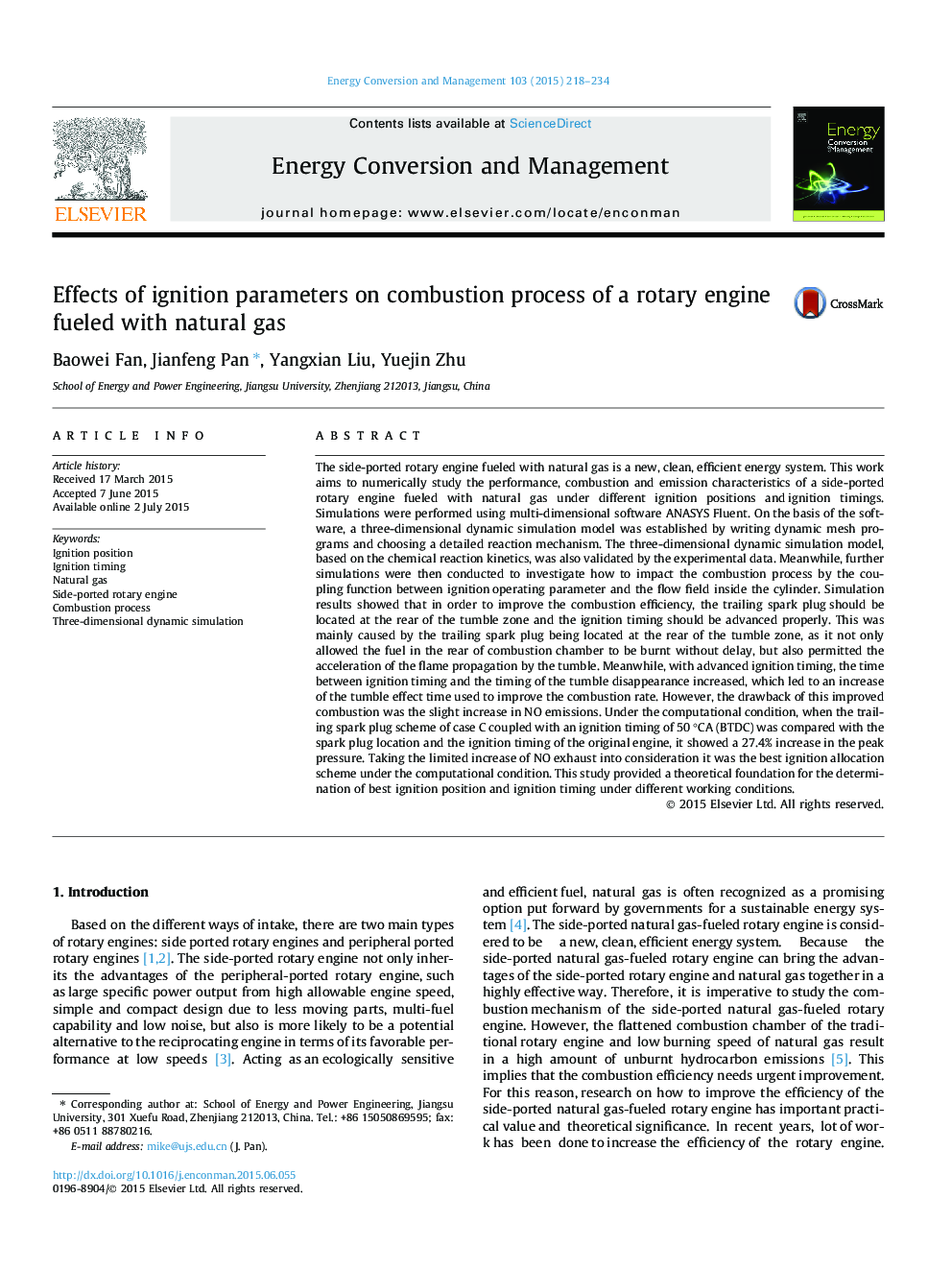| کد مقاله | کد نشریه | سال انتشار | مقاله انگلیسی | نسخه تمام متن |
|---|---|---|---|---|
| 771729 | 1462859 | 2015 | 17 صفحه PDF | دانلود رایگان |
• A 3-D simulation model based on the chemical reaction kinetics is established.
• The tumble near the trailing spark plug is beneficial for the combustion rate.
• The best position of the trailing spark plug is at the rear of the tumble zone.
• An increase of the tumble effect time can improve the combustion rate.
• Considering the rate of pressure rise, the best ignition timing is 50 °CA (BTDC).
The side-ported rotary engine fueled with natural gas is a new, clean, efficient energy system. This work aims to numerically study the performance, combustion and emission characteristics of a side-ported rotary engine fueled with natural gas under different ignition positions and ignition timings. Simulations were performed using multi-dimensional software ANASYS Fluent. On the basis of the software, a three-dimensional dynamic simulation model was established by writing dynamic mesh programs and choosing a detailed reaction mechanism. The three-dimensional dynamic simulation model, based on the chemical reaction kinetics, was also validated by the experimental data. Meanwhile, further simulations were then conducted to investigate how to impact the combustion process by the coupling function between ignition operating parameter and the flow field inside the cylinder. Simulation results showed that in order to improve the combustion efficiency, the trailing spark plug should be located at the rear of the tumble zone and the ignition timing should be advanced properly. This was mainly caused by the trailing spark plug being located at the rear of the tumble zone, as it not only allowed the fuel in the rear of combustion chamber to be burnt without delay, but also permitted the acceleration of the flame propagation by the tumble. Meanwhile, with advanced ignition timing, the time between ignition timing and the timing of the tumble disappearance increased, which led to an increase of the tumble effect time used to improve the combustion rate. However, the drawback of this improved combustion was the slight increase in NO emissions. Under the computational condition, when the trailing spark plug scheme of case C coupled with an ignition timing of 50 °CA (BTDC) was compared with the spark plug location and the ignition timing of the original engine, it showed a 27.4% increase in the peak pressure. Taking the limited increase of NO exhaust into consideration it was the best ignition allocation scheme under the computational condition. This study provided a theoretical foundation for the determination of best ignition position and ignition timing under different working conditions.
Journal: Energy Conversion and Management - Volume 103, October 2015, Pages 218–234
